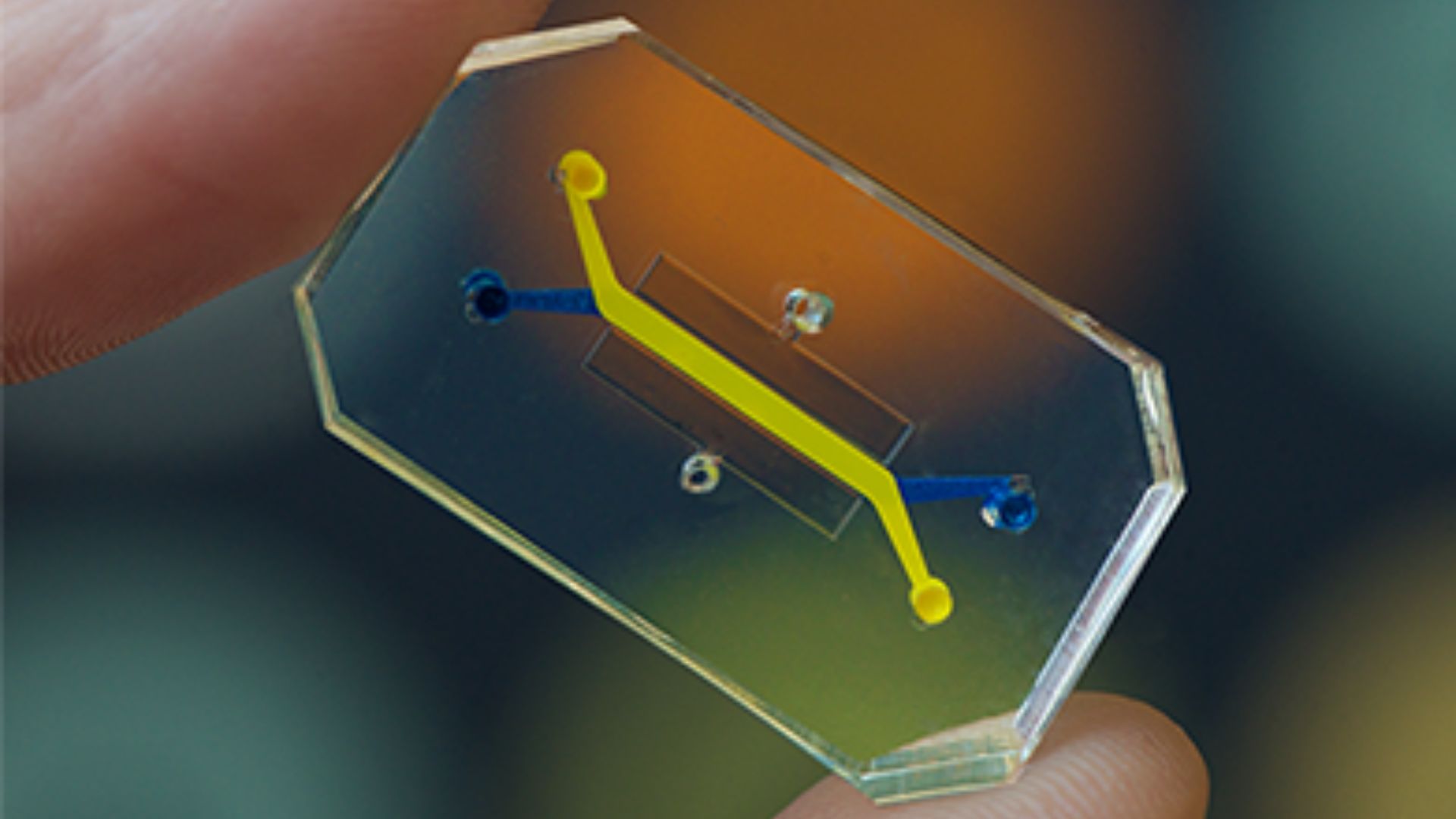Scientists invent 1st 'vagina-on-a-chip'
The first vagina-on-a-chip replicates the cellular environment of the vagina.

Scientists have developed the world's first "vagina-on-a-chip," a small device that contains live human cells and replicates the cellular environment found inside the vaginal canal.
By adding bacteria to the device, aptly named the Vagina Chip, researchers can study how different microbes affect the health of the vagina, the team reported in a new study, published Nov. 26 in the journal Microbiome. They can also test how different drugs and probiotics change the composition of the vaginal microbiome, the community of microorganisms living within the canal.
"The vaginal microbiome plays an important role in regulating vaginal health and disease, and has a major impact on prenatal health," first author Gautam Mahajan, a former researcher at Harvard University's Wyss Institute for Biologically Inspired Engineering, said in a statement. "Our human Vagina Chip offers an attractive solution to study host-microbiome interactions and accelerate the development of potential probiotic treatments," which work by introducing beneficial bacteria into the vagina, said Mahajan, who now works at the organ-on-a-chip company Emulate, Inc. in Boston.
The Vagina Chip device measures only 1 inch (2.54 centimeters) long and contains donated cells from two women; the cells were collected from the lining of the vagina and from the connective tissue that runs beneath the lining, according to The New York Times. These two types of cells sit on either side of a permeable membrane, which replicates the 3D structure of the vaginal wall.
Related: Vaginal bacteria can vary widely in healthy women
The scientists allowed these cells to multiply for five days in the device before adding the sex hormone estradiol, a form of estrogen. The hormone changed which genes were switched "on" in the tissues and triggered the production of mucus, as would occur in vivo.
With their device complete, the team ran several tests with bacteria commonly found in the vagina, namely, several strains of Lactobacillus bacteria; studies suggest that these microbes make up more than 70% of a healthy vagina's microbiome, according to the Wyss Institute statement.
Get the world’s most fascinating discoveries delivered straight to your inbox.
The researchers found that the Lactobacillus bacteria successfully produced lactic acid in the Vagina Chip, thus driving down the pH of the tissue inside. A healthy vagina typically has a pH of 4.5 or less, meaning it's acidic, and this acidity helps prevent the growth of harmful bacteria that could cause disease. In addition, adding the Lactobacillus bacteria reduced the number of inflammatory molecules circulating in the tissues.
Having run experiments with "good" bacteria, the team did the same with "bad" bacteria, meaning bugs associated with bacterial vaginosis (BV), a common vaginal infection caused by the overgrowth of specific bacteria. These bugs include Gardnerella vaginalis, Prevotella bivia, and Atopobium vaginae, and when introduced into the Vagina Chip, all three bacteria caused the pH of the device to rise along with the number of inflammatory molecules and damaged vaginal cells.
BV increases the risk of sexually transmitted diseases, such as chlamydia and gonorrhea, both of which can negatively affect future fertility by triggering a harmful inflammation, according to the Centers for Disease Control and Prevention (CDC). If developed during pregnancy, BV also raises the risk that a baby will be born prematurely or at a low birth weight. The new vagina-on-a-chip could help scientists develop new and better treatments for BV, sexual health physician Achyuta Nori of St. George's, University of London, who was not involved with the study, told Scientific American.
"This is an opportunity to bring women's health into the modern times, using modern technology," Nori said. The chip offers an advantage over testing therapies in lab animals like mice, whose vaginal microbiomes greatly differ from humans'; in addition, it's historically been difficult for drug developers to recruit human patients for BV treatment trials, partly due to patients' concerns over safety, experts told the Times.
That said, organ-on-a-chip technology does have its limitations, so it cannot perfectly capture all the factors that influence the human vaginal microbiome. But the Vagina Chip is a good first step towards further research.

Nicoletta Lanese is the health channel editor at Live Science and was previously a news editor and staff writer at the site. She holds a graduate certificate in science communication from UC Santa Cruz and degrees in neuroscience and dance from the University of Florida. Her work has appeared in The Scientist, Science News, the Mercury News, Mongabay and Stanford Medicine Magazine, among other outlets. Based in NYC, she also remains heavily involved in dance and performs in local choreographers' work.


